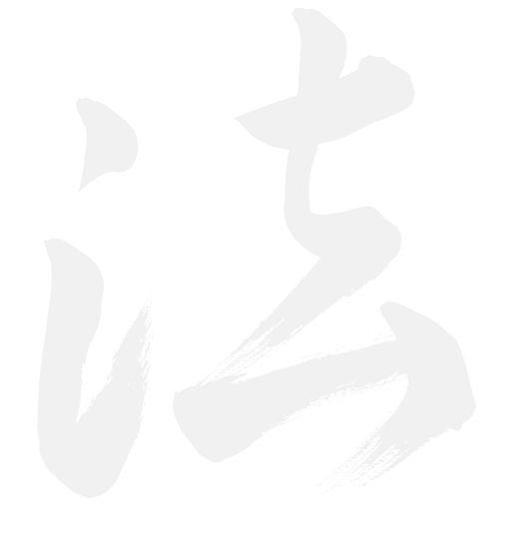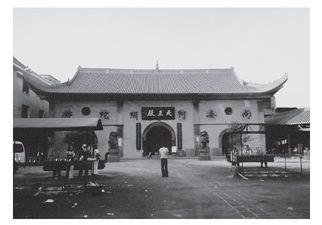Read Zen's Chinese Heritage: The Masters and Their Teachings Online
Authors: Andy Ferguson
Tags: #Religion, #Buddhism, #Zen, #Biography & Autobiography, #Religious, #Philosophy
Zen's Chinese Heritage: The Masters and Their Teachings (18 page)

Dharma master Yuan asked Shenhui, “Were Zen master Huineng and Zen master Shenxiu not fellow students of Hongren?”
Shenhui said, “They were.”
Chongyuan asked, “Since they were fellow students, are their teachings the same or not?”
Shenhui said, “Not the same.”
Chongyuan said, “Since they were fellow students, why are their teachings not the same?”
Shenhui said, “I will now explain their difference. It’s because Zen master Xiu taught people to ‘focus the mind and enter concentration. Stop the mind and observe purity. Give rise to mind that shines outward. Collect the mind inside and bear witness to it.’ For this reason their teaching is different.”
Chongyuan said, “Why is it that Zen master Neng does not teach [the practices taught by Zen master Xiu]? What are his practices?”
Shenhui said, “The practice of Shenxiu is to harmonize and subdue the mind.”
Chongyuan said, “Then should one not [perform the practices taught by Shenxiu]?”
Shenhui said, “These are the methods of the ignorant. Zen master Huineng’s practice is found apart from the two methods of ‘subduing’ or ‘not subduing.’ This is why is says in the sutra, ‘mind does not abide within, nor is it external.’ It is in quiet sitting. When one sits in this manner, one realizes buddhahood. In the six generations that have come before, not a single person performed the practices of Shenxiu. They are entirely different.”

In the year 760 Shenhui passed away while sitting in meditation. His burial stupa is located at Dragon Gate.
PART TWO:
THE CLASSICAL PERIOD 755–950


Eighth Generation
MAZU DAOYI, “DAJI”
MAZU DAOYI (709–88) was a student of Nanyue Huairang. After Huineng, Mazu is the most famous of the ancient Chinese Zen masters. Two of the traditionally acknowledged major schools of Zen trace their lineage through this renowned Zen ancient. From his home in Sichuan Province, Mazu made his way to Zhongqing, where he initially studied under a second-generation teacher of Daman Hongren (the Fifth Ancestor). There he received ordination as a Buddhist monk. Later, he settled on Mt. Heng, where he met Nanyue Huairang. After ten years of study with Nanyue, he received Dharma transmission, then proceeded to travel as a
yunshui
the length and breadth of China, perfecting his understanding of the Buddha way. Eventually he settled at Zhongling (now Nanchang City), where students from every quarter came to study with him.
Mazu’s Zen lineage is remembered as the Hongzhou Zen school. Located in what is now Jiangxi Province, it was the dominant Zen school of the later Tang dynasty (late ninth and early tenth centuries). Mazu was the first Zen teacher acknowledged to use the staff to jolt his students into awakening. The strident style of his Hongzhou school foreshadowed the uncompromising training methods of his famous Zen descendant, Linji Yixuan.
Unlike some other Zen masters of his time, Mazu did not leave an extensive written record of his teachings. Instead, we know of him largely from imaginative legends that reflect the awesome sense of presence that he conveyed.
Like the great Zen masters of all ages, Mazu emphasized the immediacy of Zen enlightenment. He emphasized the teaching that “mind is Buddha” and “This place is itself true thusness.” Mazu’s “sudden” approach moved the Chinese spiritual scales back toward “pointing directly at mind,” the essential teaching of Bodhidharma’s Zen.

The acclaimed greatness of a Zen master does not arise simply from his or her message. Equally important is the awesome and bone-chilling presence that such masters demonstrate. This tangible sense of presence reveals an astonishing freedom. Zen students, observing such masters, naturally aspire to gain the remarkable composure, effortless grace, and uncluttered vision that they embody. Later generations gain a sense of what these ancients were like partly through their words, but more intimately through their legends.
The
Wudeng Huiyuan
provides the following account of Mazu’s life and teaching.

Zen master Mazu Daoyi of Jiangxi was from Shifang in Hanzhou [about forty kilometers north of the modern city of Chengdu in Sichuan Province]. His surname was Ma. He entered Luohan Temple in his home district. His appearance was most unusual. He strode like an ox and glared like a tiger. His extended tongue covered his nose. On the soles of his feet his veins formed two circles. As a youth he received tonsure under a monk named Tang in Zizhou. He was fully ordained under Vinaya master Yuan in Yu Province.
During the Kai Yuan era [713–41] Mazu met Master Nanyue Huairang while practicing Zen meditation on Mt. Heng. Six others also studied with Nanyue but only Mazu received the secret mind seal. Nanyue Huairang and his student Mazu Daoyi can be compared with Qingyuan Xingsi and his student Shitou Xiqian. Though they came from the same source, they diverged into two branches. The brilliance of ancient Zen arose through these two masters. Liu Ke said, “In Jiangxi is Master Daji. In Hunan is Master Shitou. Anyone traversing the country seeking a teacher who doesn’t see these two will remain ignorant.”
The record of Prajnadhara of India made a prediction about Bodhidharma, saying, “Although the great land of China is vast, there are no roads where my descendants won’t travel. The phoenix, with a single grain, nourishes the saints and monks in the ten directions.”
The Sixth Ancestor [also citing an ancient prediction by Prajnadhara] said to Nanyue, “Hereafter, from the area to which you will go, a horse will come forth and trample everyone in the world to death.”
Later, the Dharma of Nanyue’s spiritual heir was spread across the world. People of that time called him Master Ma.
From Buddha Trace Mountain in Jianyang, Mazu moved to Linchuan. He then moved to Nankang at Gonggong Mountain. In the middle of the Dali era [766–79], Mazu lived at the Kaiyuan Temple in Zhongling. During that time the high official Lu Sigong heard of Mazu’s reputation, and personally came to receive instruction. Because of this, students from the four quarters gathered like clouds beneath Mazu’s seat.

One day Mazu addressed the congregation, saying, “All of you here! Believe that your own mind is Buddha. This very mind is buddha mind. When Bodhidharma came from India to China he transmitted the supreme vehicle teaching of one mind, allowing people like you to attain awakening. Moreover he brought with him the text of the Lankavatara Sutra, using it as the seal of the mind-ground of sentient beings. He feared that your views would be inverted, and you wouldn’t believe in the teaching of this mind that each and every one of you possesses. Therefore [Bodhidharma brought] the Lankavatara Sutra, which offers the Buddha’s words that mind is the essence—and that there is no gate by which to enter Dharma. You who seek Dharma should seek nothing. Apart from mind there is no other Buddha. Apart from Buddha there is no other mind. Do not grasp what is good nor reject what is bad. Don’t lean toward either purity or pollution. Arrive at the empty nature of transgressions; that nothing is attained through continuous thoughts; and that because there is no self-nature the three worlds are only mind. The myriad forms of the entire universe are the seal of the single Dharma. Whatever forms are seen are but the perception of mind. But mind is not independently existent. It is co-dependent with form. You should speak appropriately about the affairs of your own life, for each matter you encounter constitutes the meaning of your existence, and your actions are without hindrance. The fruit of the bodhisattva way is just thus, born of mind, taking names to be forms. Because of the knowledge of the emptiness of forms, birth is nonbirth. Comprehending this, one acts in the fashion of one’s time, just wearing clothes, eating food, constantly upholding the practices of a bodhisattva, and passing time according to circumstances. If one practices in this manner is there anything more to be done?
“To receive my teaching, listen to this verse:
The mind-ground responds to conditions.
Bodhi is only peace.
When there is no obstruction in worldly affairs or principles,
Then birth is nonbirth.”


